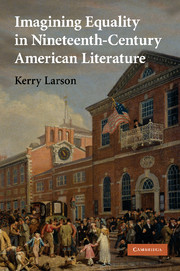6 - The common condition
Published online by Cambridge University Press: 04 May 2010
Summary
Near the end of Woman in the Nineteenth Century, Margaret Fuller, intrigued by Fourier's “proposing a great variety of employments” in his vision for a redeemed society, calls for “a much greater range of occupation [for women] than they have, to rouse their latent powers.” Written in 1845, Fuller's declaration comes in the midst of a newfound interest in the expressive potential of work that would become an increasingly dominant topic of concern through the antebellum period and beyond. The expectation that work, to be truly meaningful, must engage, cultivate, or actualize the “latent powers” of the self (or a group of selves) finds a home in not just the phalanstery but in countless novels and stories that chronicle the odyssey of protagonists seeking to identify their “true place.” Within working-class circles, its influence is no less evident in emerging conceptions of class-consciousness, just as, within the literature of labor protest, it is central to developing theories about worker alienation. Older, Protestant notions of the calling had privileged labor as the preferred means for honoring one's obligation to God. But by the second quarter of the nineteenth century it was no longer just a question of honoring one's obligation to God. One needed to honor the obligation to the person God meant one to be. It was not enough for work to be useful. It must be expressive.
- Type
- Chapter
- Information
- Imagining Equality in Nineteenth-Century American Literature , pp. 168 - 182Publisher: Cambridge University PressPrint publication year: 2008

